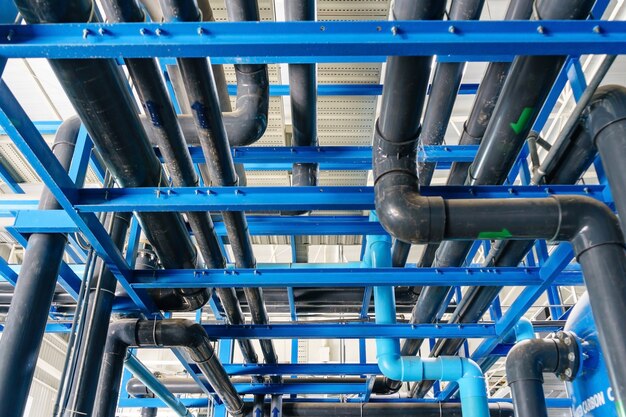In the modern era of construction and industrial projects, piping systems form a crucial backbone for the smooth functioning of facilities. Piping systems are complicated and need thorough design and execution in industries like as oil and gas, electricity production, and chemical processing. Here is where the Plant Design Management System (PDMS) comes into play. PDMS piping design is a specialized approach to piping and plant design that streamlines operations while maintaining efficiency, accuracy, and flexibility. Here's why PDMS has become indispensable in modern piping projects.
Enhanced 3D Visualization
The exceptional 3D visualization capabilities of PDMS are among its most important benefits. With PDMS, engineers and designers can view plumbing systems in a fully interactive 3D environment, in contrast to standard 2D drawings. This not only improves understanding of the architecture, but also assures that all components are correctly arranged inside the plant design.
Designers, for example, can zoom in on complicated piping sections, rotate models to inspect connections, and simulate fluid flow to identify possible bottlenecks. This capacity decreases the possibility of mistakes that frequently result from misreading of 2D designs. Furthermore, clients and stakeholders can see the project more clearly, resulting in greater communication and speedier decision-making.
Streamlined Collaboration
Modern piping projects often involve teams spread across various disciplines and locations. Project managers, engineers, architects, and construction workers can collaborate in one location with PDMS.
Everyone can view the most recent project information in real time using PDMS. Because of this, there are less error, fewer do-overs, and more time saved because everyone works from the same blueprint. Role-based access is another feature that PDMS provides; guaranteeing that only authorized individuals can securely access critical data.
Customization and Flexibility
Another key reason for PDMS's popularity is its high level of customization. Piping projects differ significantly based on industry requirements, material specifications, and environmental considerations. Users can customize PDMS piping design's libraries and tools to satisfy particular project requirements.
For instance, engineers can create custom pipe specifications, fittings, and valve designs within the software. This adaptability guarantees that unique project requirements are fulfilled while maintaining design integrity. Furthermore, PDMS's versatility makes it suited for a wide range of sectors, from tiny production units to vast offshore oil rigs.
Clash Detection and Error Minimization
Errors and conflicts in plumbing designs can cause costly delays and safety problems throughout the building process. PDMS has powerful clash detection capabilities that detect possible interference between pipelines, equipment, and structural components.
By addressing these issues in the design phase, PDMS prevents expensive corrections during construction. For example, if a pipeline intersects with a structural beam, PDMS flags this clash, enabling designers to adjust the layout accordingly. This proactive approach not only saves money but also enhances project safety and efficiency.
Cost and Time Efficiency
In any project, time and budget constraints are critical factors. PDMS's automation features add greatly to cost and time savings. Repetitive operations such as creating isometric drawings, material take-offs, and reports are automated, allowing designers to focus on more vital areas of the project.
Furthermore, PDMS' capacity to replicate real-world situations aids in design optimization, material waste reduction, and budget compliance. Because of these advantages, PDMS is an excellent choice for businesses looking to increase project profitability.
Seamless Integration with Other Systems
Modern piping projects rely on various software tools for design, analysis, and project management. PDMS is intended to work smoothly with various technologies, which include stress analysis software, structural design systems, and enterprise resource planning (ERP) platforms.
This interoperability guarantees that data flows seamlessly throughout the project, from original design to building and maintenance. Engineers, for example, can export piping designs from PDMS to stress analysis tools to determine pipeline resilience in the face of pressure and temperature changes.
Improved Compliance with Standards
Compliance with industry standards and regulations is an essential component of pipe projects. PDMS contains vast libraries and tools that comply with worldwide standards like as ASME, ANSI, and ISO.
This built-in compliance guarantees that designs comply with regulatory regulations, lowering the likelihood of legal and operational concerns. It also speeds up the approval process because stakeholders can immediately confirm that all design aspects correspond to established standards.
The Future of Piping Design with PDMS
As industries change, so do the demands on pipe systems. PDMS makes projects future-proof by providing scalable and upgradeable solutions. The software's ongoing upgrades and additions keep it current with developing technologies and approaches.
For example, PDMS facilitates the integration of Building Information Modeling (BIM) procedures, which are increasingly popular in modern construction. This forward-thinking approach guarantees that projects built with PDMS stay relevant and adaptable to future requirements.
Final Thoughts
PDMS is a cornerstone for efficient and accurate PDMS piping design in today’s industrial and construction projects. Its features, such as 3D visualization, clash detection, customization, and seamless integration, make it an essential tool for ensuring efficiency, safety, and precision.
For organizations looking to take their piping projects to the next level, Piping Consulting Group is a trusted partner. With expertise in PDMS and a commitment to delivering innovative solutions, they provide unmatched guidance in piping design and project management. Their tailored consulting services ensure projects are executed flawlessly, saving time and costs. Turn to them for solutions that set the gold standard in the industry.






Comments